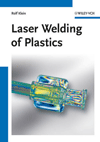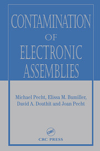The
results are in from the latest National Assessment of Educational Progress
(NAEP). Formally called The Nation’s Report Card: Trends in Academic Progress
in Reading and Mathematics 2008, this 40-year ongoing project of the U.S. Department
of Education has periodically assessed educational progress in various subjects
since the early 1970s.
This long-term trend assessment studied progress in reading and mathematics
among students aged 9, 13 and 17 since the previous assessment carried out in
2004. Average reading scores in all three groups increased since 2004, and
scores for the 9- and 13-year-olds show a modest increase since 1971. The average
reading score for 17-year-olds was not significantly different from the score
in 1971.
Average mathematics scores for 9- and
13-year-olds increased since 2004 and show a modest increase since 1973. The
average mathematics score for 17-year-olds showed no increase from 2004 and was
not significantly different from the score in 1973. Bob Wise, president of the
Alliance for Excellent Education (Washington) says these results suggest that
gains made by younger students are “washing out” as they get older. You can
find the complete report athttp://nces.ed.gov.
Any
increase is good, of course, but most of the scores show an increase of only 5
percent to 10 percent since the early 1970s. Worse yet, there is no improvement
among 17-year-olds. This is hardly acceptable for a nation that has long prided
itself on its technological leadership. In fact, Susan Traiman, director of
public policy at the Business Roundtable (Washington) is quoted inThe Wall Street Journalsaying, “The report really
reinforces the fact that high-school reform is long overdue.”
School choice is a high priority for most reform advocates, and policies that
give parents the ability to exercise private-school choice continue to
proliferate across the country, according to The Heritage Foundation
(Washington). On Capitol Hill, however, progress in expanding parental choice
in education remains slow. Indeed, Congress recently approved legislative
action that threatens to phase out the D.C. Opportunity Scholarship Program, a
federally funded initiative that currently helps 1,700 disadvantaged children
attend private schools in the nation’s capital.
While only 11 percent of American students attend private schools, a recent
survey by the Foundation revealed that 44 percent of senators and 36 percent of
representatives have sent or are sending their children to private schools.
Writing recently inThe
Wall Street Journal, William McGurn suggests that the biggest
problem faced by parents who seek the opportunity for school choice is this
“smarmy double standard” prevalent in the Beltway.
Those who are elected, or appointed, to act in the best interests of America’s
most important natural resource-her children-seem to believe that substandard
or failing public schools are fine for your children, butnotfor theirs. America cannot afford this “do as I say, not
as I do” approach to education policy.
Editorial: Do As I Say...
Looking for a reprint of this article?
From high-res PDFs to custom plaques, order your copy today!




